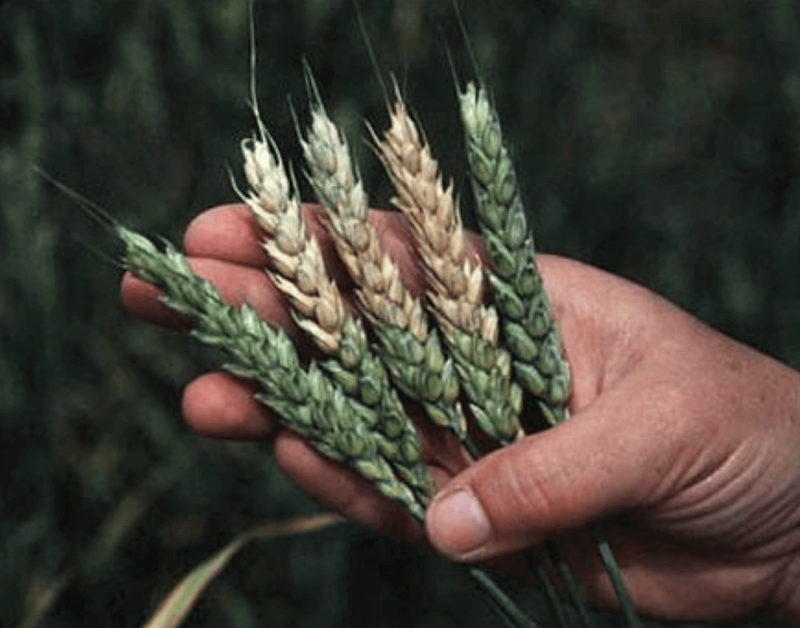Wheat scab hits farmers with a double punch. The fungal disease, also known as Fusarium head blight, shrivels grain and can significantly dent harvests of wheat and barley. Worse, the toxins released by the fungus Fusarium graminearum, a growing problem in the breadbaskets of Europe, North America, and China, remain in grain intended for food. Above legal limits, they can harm people and animals. Grain from infected plants must be discarded in many countries, although some allow blending with uninfected grain.
Fungicides are no panacea, in part because the pathogen infects during wet weather, when the chemicals wash away. But researchers have now found a protective gene in a wild relative called wheatgrass. Called Fhb7, it encodes a toxin-destroying enzyme, the team reports online [April9] in Science. “The gene could have a very large impact in breeding for Fusarium resistance in wheat,” says James Anderson, a wheat breeder at the University of Minnesota, Twin Cities.
The gene originated in a benign fungus that lives inside wild grasses, then somehow slipped into the wheatgrass genome. Such symbiotic fungi can help their plant hosts defend against a destructive invader. The study authors suggest fungal DNA could yield other potential resistance genes for plants.































